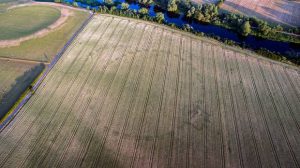Discovering the Heritage Around Us
Discovering the Heritage Around Us
Discovering the Heritage Around Us
At last weeks’ launch of the Wicklow Trails Heritage Recording Project, we discovered that our heritage surrounds us – it’s created by both nature and by man, forming a living landscape shaped by the activities of those who have lived and worked there – past and present.
Yesterday, news broke of the possible existence of a previously unknown national monument site at the world renowned Brú na Bóinne or Boyne Valley tombs in County Meath.
Situated close to the UNESCO World Heritage Site of Newgrange, the existence of this possible henge, or circular enclosure, was unknown until the current heatwave revealed moisture variables in the soil.

Drone footage showing the possible presence of a previously unknown site at Brú na Bóinne
The henge, which could measure up to 200 metres in diameter, is believed to have been built around 2,500 BC, some 500 years after Newgranges construction and is being described as a “potentially substantial discovery”.
Coincidently, this all happens at a time when the first research excavations for more than 30 years, has begun at the Newgrange site with a team of 18 archaeologists conducting a 4 week set of excavations. This follows an extensive 2015 geophysical survey which discovered what has been described by geophysicist, Joanna Leigh as a ‘the most definite complex and ordered feature ever seen in a geographical survey in Ireland”. It is suggested that the dig will uncover numerous large pits, forming two parallel sets extending over 75 metres, indicating the presence of an ancient processional route to Newgrange.
Although less renowned on the world stage, could the Wicklow Trails Heritage Recording Project discover some secrets in the Wicklow Upland Region too?
Wicklow Trails Heritage Recording Project
The Wicklow Trails Heritage Recording Project seeks to create a digital archive of the rich natural, built and cultural heritage found in the east of County Wicklow.
Using the network of new and developing trails between Bray Head and Woodenbridge, it will create a public archive of historical images, written records, folklore and oral history found in the towns, villages and settlements identified along its route.
Each section of the route tells it’s own unique story whether it’s from glacier activity, landlords and estates or due to industries such as mining or hill farming.

Historic Image of Roundwood Village
Abarta Heritage have been commissioned to discover the many points of interest found in the region and to compile the information and stories that relate to them. In the coming weeks, the team from Abarta Heritage will be working closely with local groups and individuals on the ground.
Local knowledge is seen as invaluable to the success of the project as no one knows it better than those who live, work and visit the area.
Do you have a story to tell or a photo hiding in a dusty album somewhere or know someone who may?
It is intended that once completed, this project will help inform the future development of visitor and tourism interpretation and to promote this area as part of Irelands Ancient East.
A number of Story Sharing Evenings will also be organised in the autumn to introduce some of the discoveries to the local communities and to offer an opportunity for historical groups and individuals involved in the project, to meet and celebrate its success.
If you would like any further information or would like to become involved in this exciting project, please visit www.CountyWicklowHeritage.org for full details.
The Wicklow Trails Heritage Recording Project is jointly managed by the Heritage Office of Wicklow County Council and Wicklow Uplands Council.

